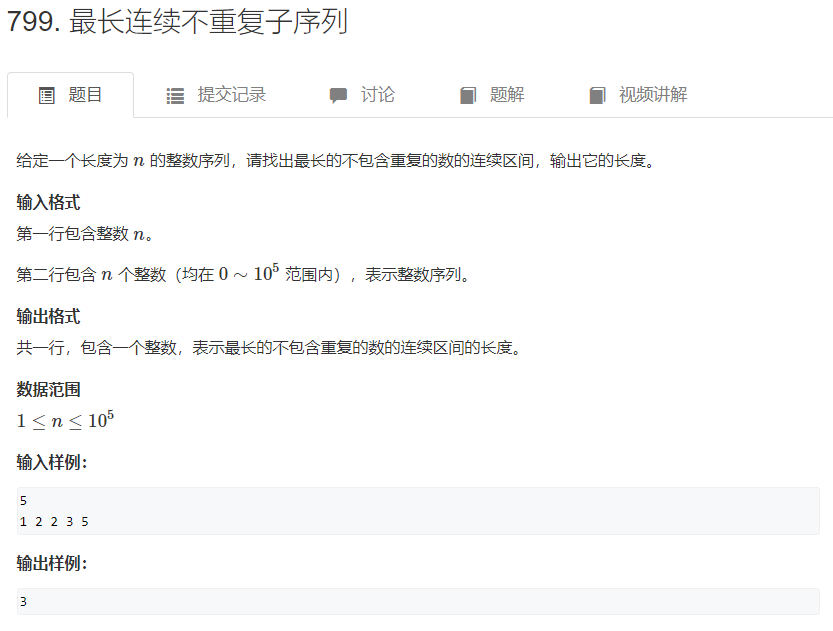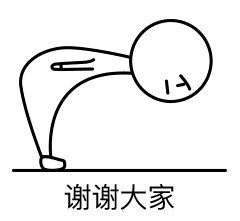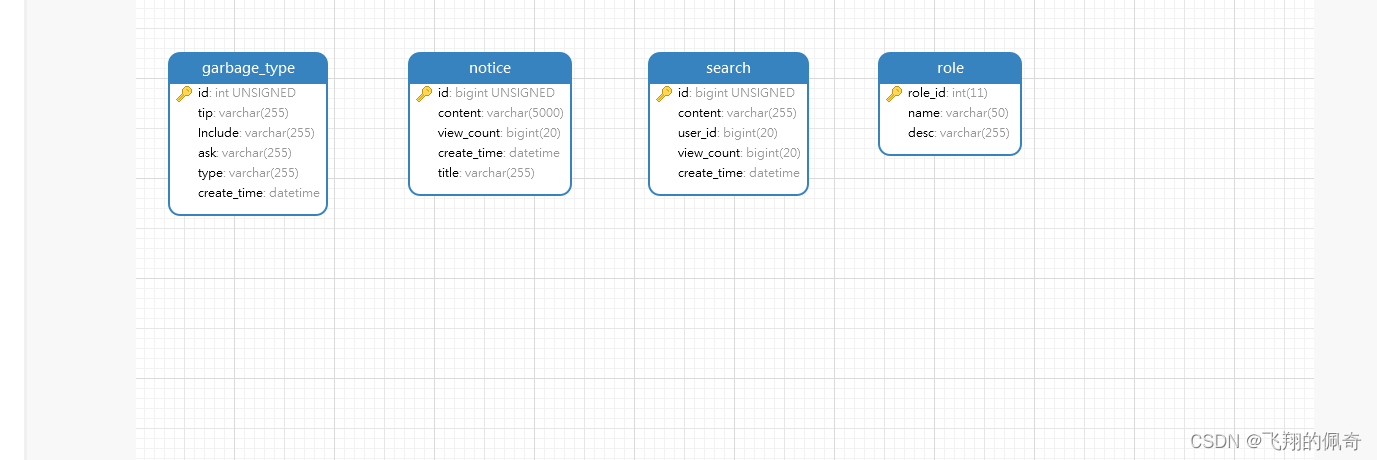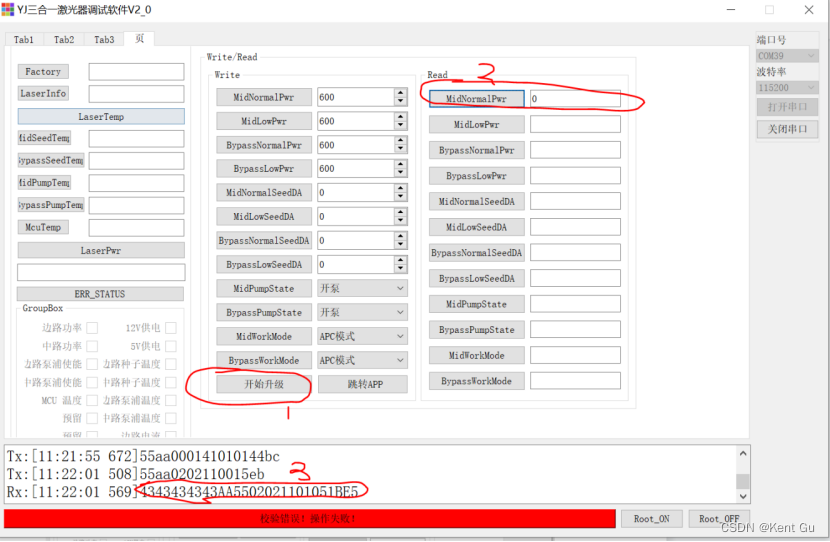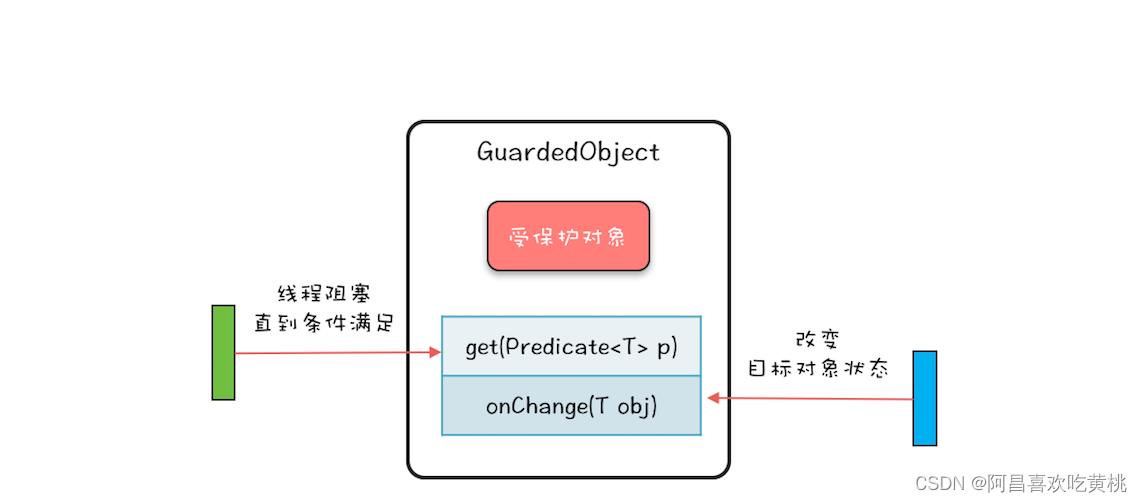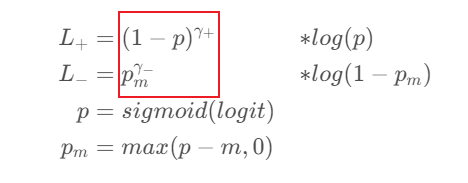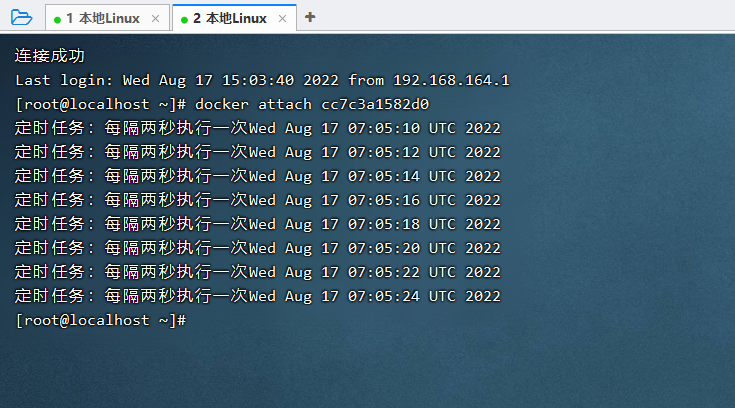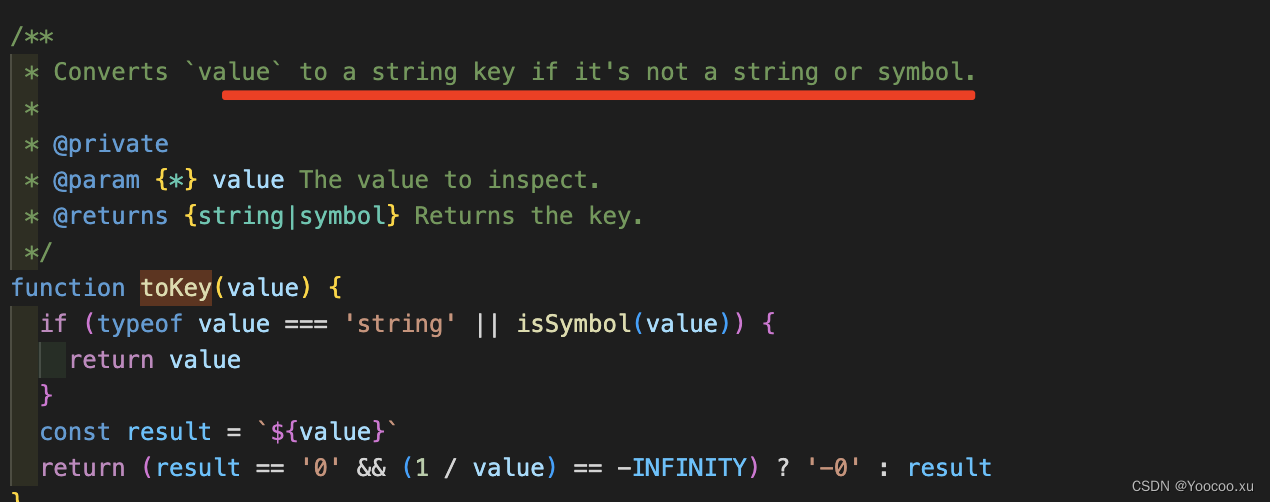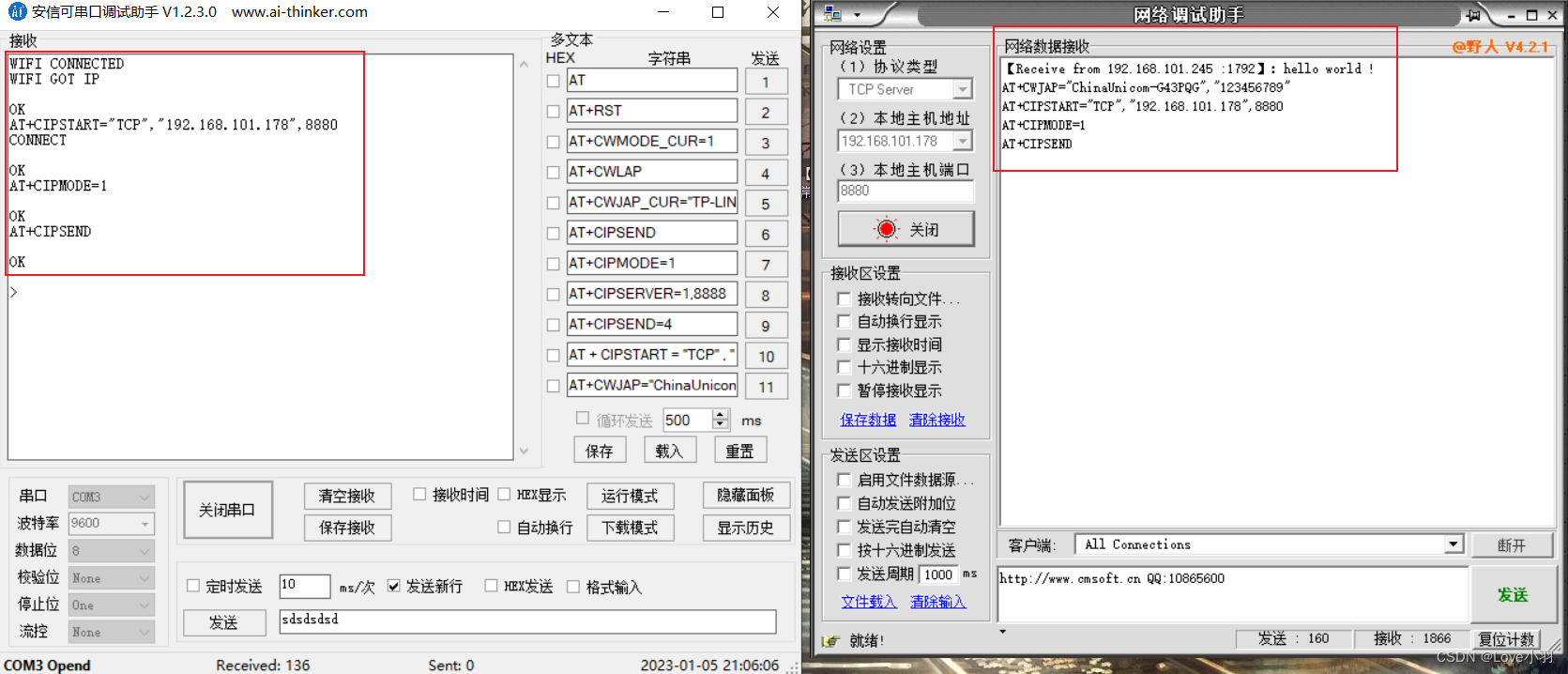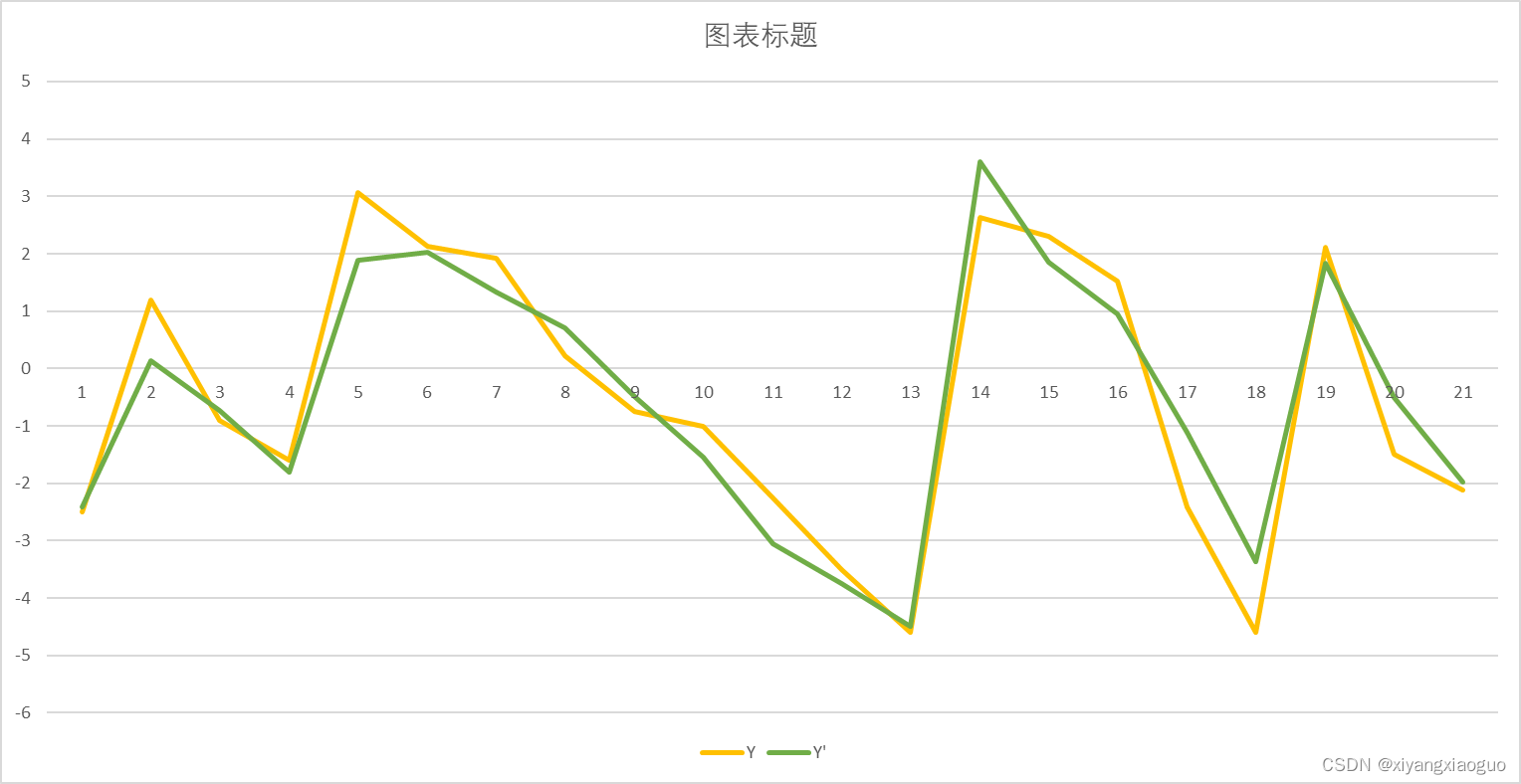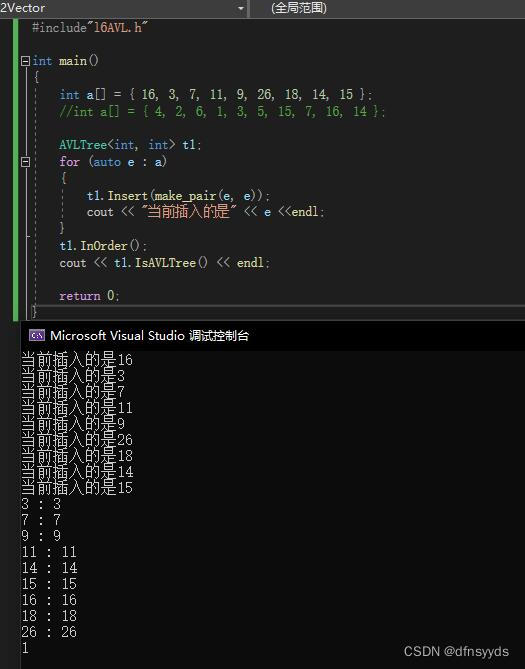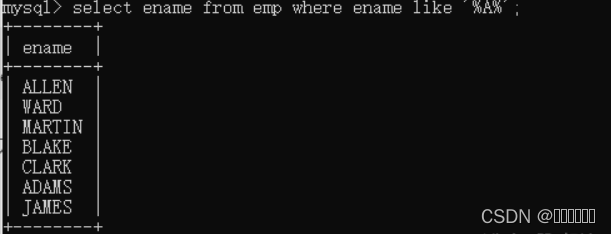ML 基本概念
- 1. different types of functions
- 2. how to find the function - training data
- 3. unseen during training
- 4. Back to ML Framework
- 4.1 Step1: function with unknown
- 4.2 Step2: define loss from training data
- 4.3 step3: optimization
- 4.4 其他
- 4.4.1 Sigmoid → ReLU
- 4.4.2 more variety of models
- 5. 神经网络 → 深度学习?!
Machine Learning ~ looking for function
1. different types of functions
-
Regression: output a scalar
-
Classification: classes → correct one
-
黑暗大陆:structured learning - 创造
2. how to find the function - training data
-
function with unknown parameters - Model
y = b + w x 1 y = b+wx_1 y=b+wx1
based on domain knowledgew and b are unknown parameters(learned from data)
x1 - features
w - weight
b - bias
-
Define Loss from Training data
Loss is a function of parameters. Loss means how good a set of values is.
L ( b , w ) = Σ 1 n e n L(b,w)=\Sigma\frac{1}{n}e_n L(b,w)=Σn1en
e: 预计值与真实值(Label)间的差距,计算方法很多-
MAE: mean absolute error
y = ∣ y − y ^ ∣ y = |y-\widehat{y}| y=∣y−y ∣ -
MSE: mean square error
-
-
Optimization
Gradient Descent

- hyperparameters
直到微分为0或你已经失去耐心
问题非常明显:并未找到真正的global minima而是停留在一个Local minima.
但事实上,Local minima是个伪命题,后续详谈。
推广至两个参数:

直观来看
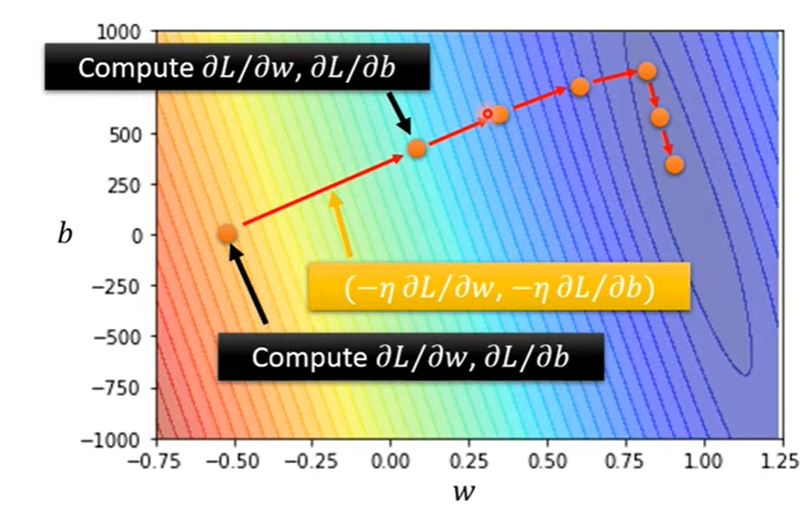
3. unseen during training
观察到7天一循环 于是

这样的模型叫做Linear models. 这样简单的线性关系有Model Bias,我们需要更flexible的模型
All piecewise linear curves =
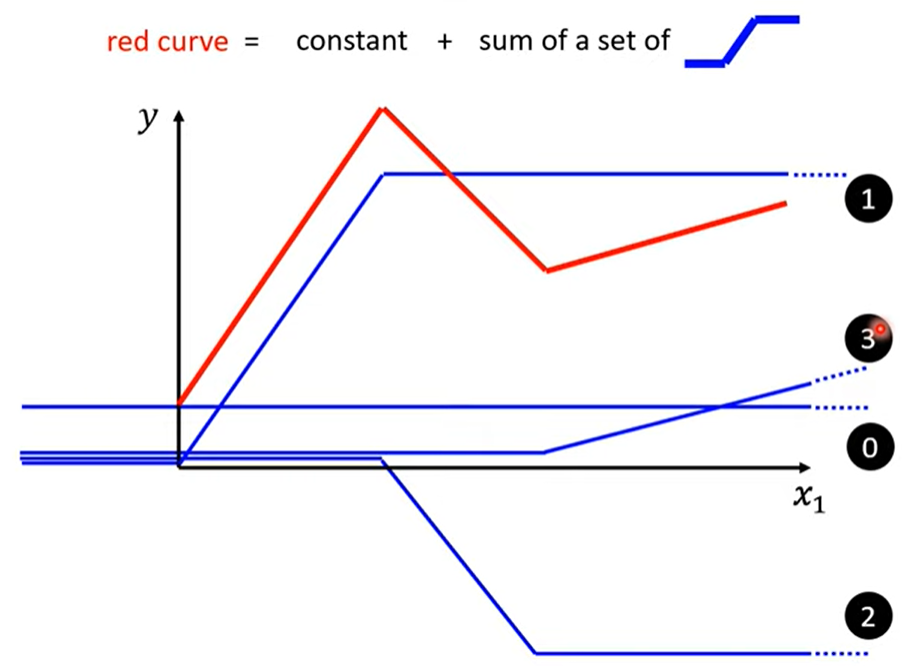
piecewise linear curve(hard Sigmoid)可以用来逼近continuous curve

x1趋近正无穷,y趋近于c;x趋近于负无穷,y趋近于0.
不同的w c b造出不同的sigmoid function,叠加出复杂的piecewise linear curve,从而逼近各种曲线
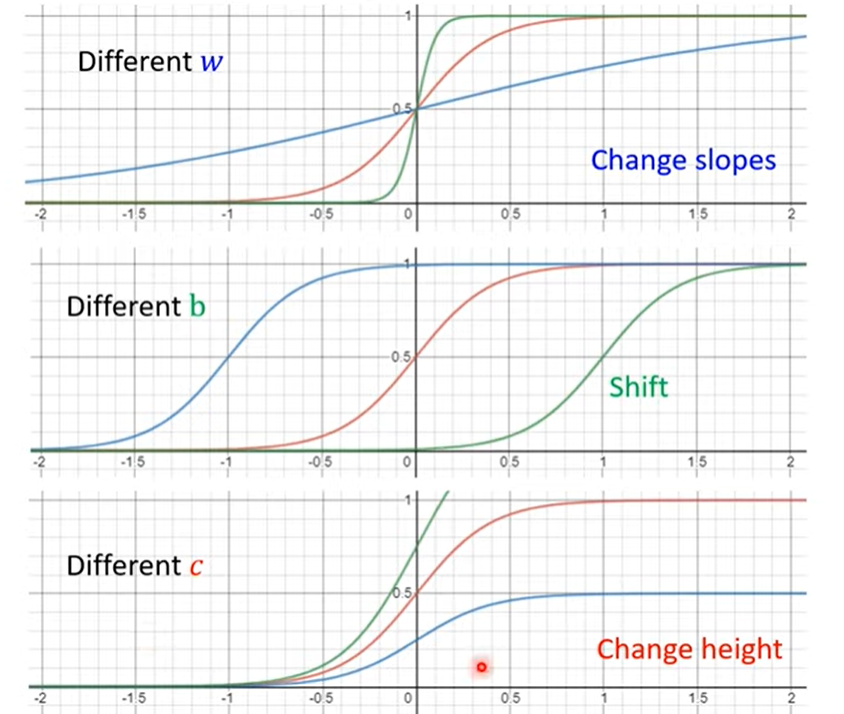
于是我们可以通过如下含有不同参数的公式,来逼近


推广至多天(more features)
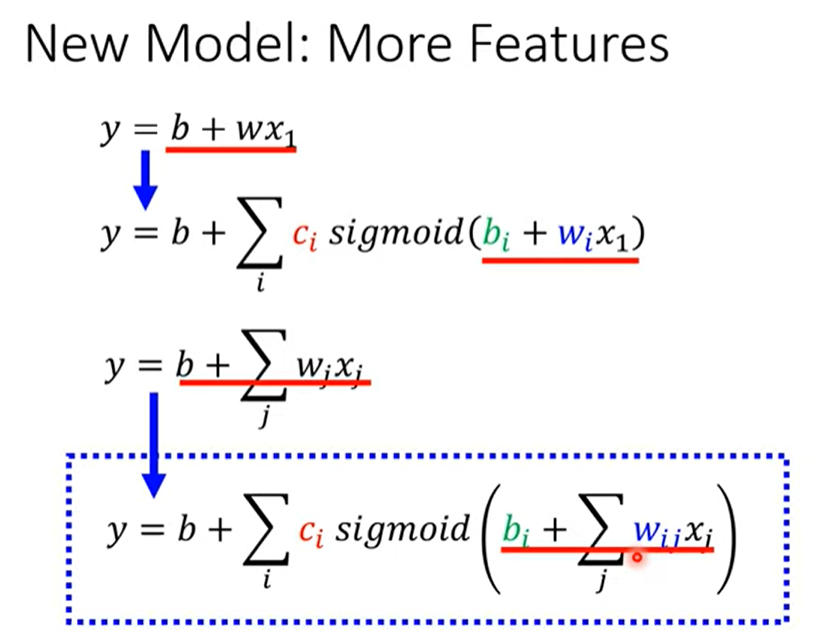
4. Back to ML Framework
4.1 Step1: function with unknown
每个 i 表示蓝色的function(hyperparameter),j表示features
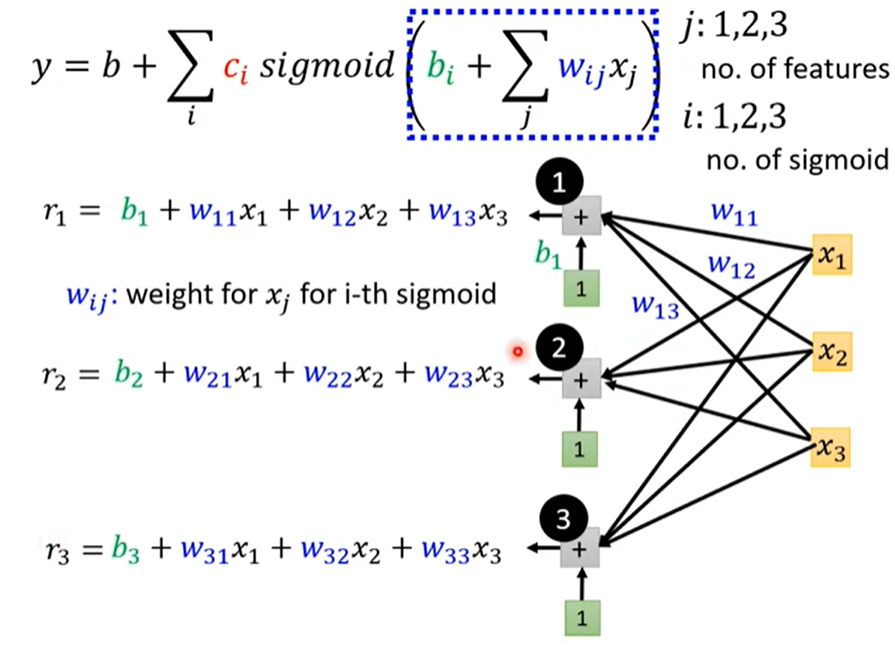

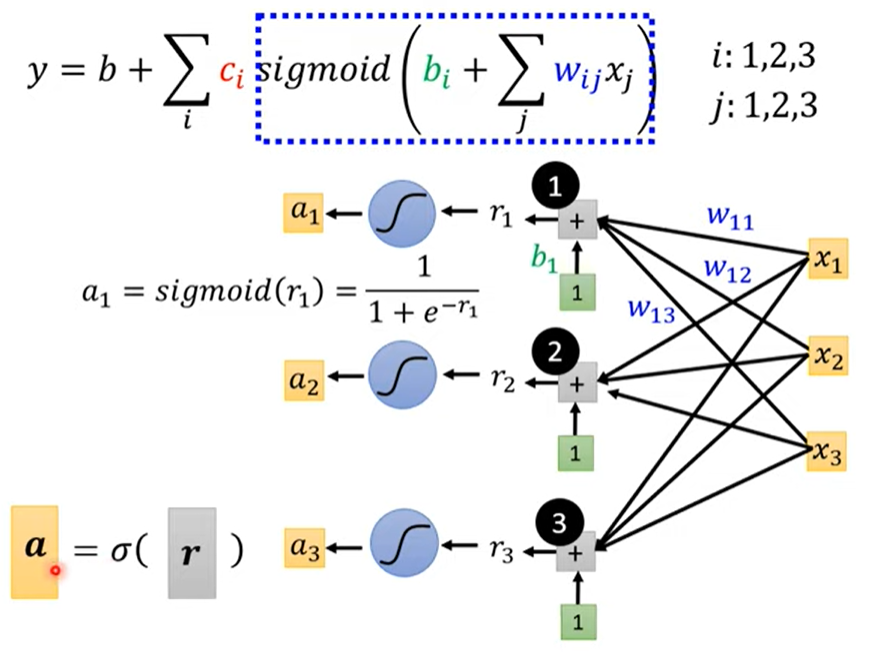
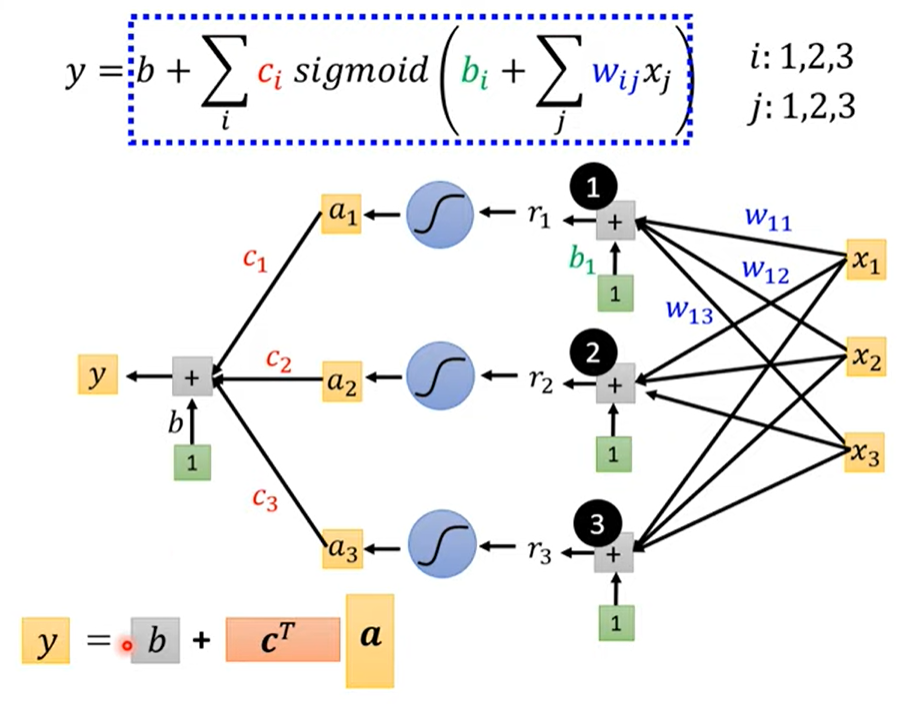
综上,用线性代数的矩阵表示
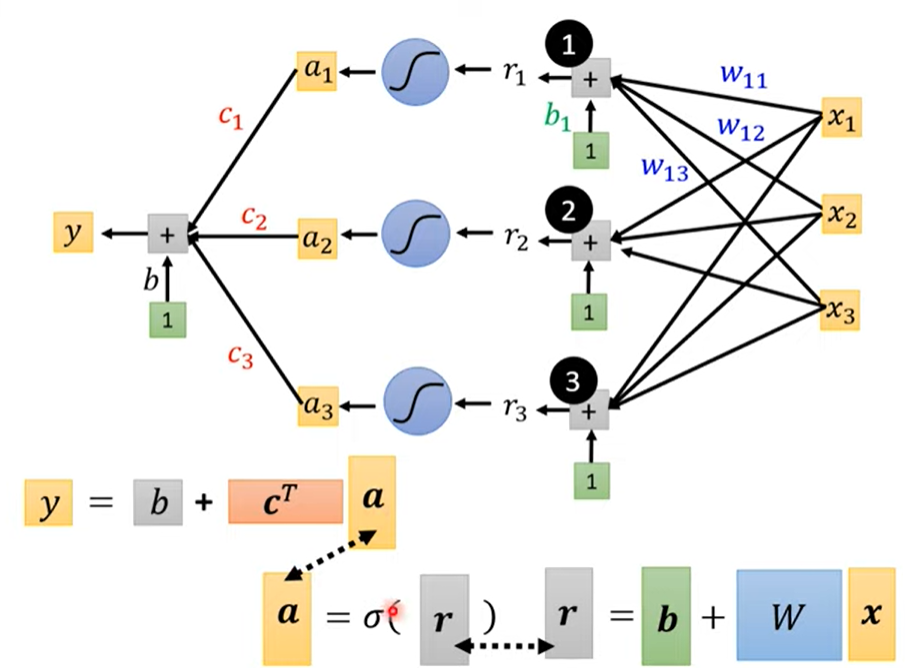
把unknown parameters拉直拼成一个长向量
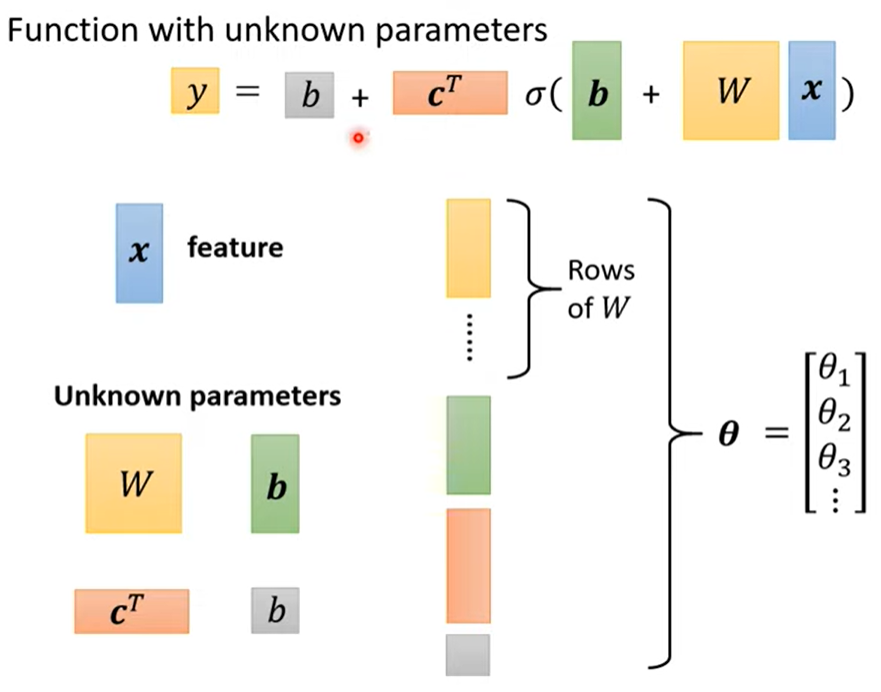
4.2 Step2: define loss from training data
只不过现在Loss的参数多了
L
(
θ
)
L(\theta)
L(θ)
Loss means how good a set of values is.

4.3 step3: optimization
gradient 求梯度,并更新参数
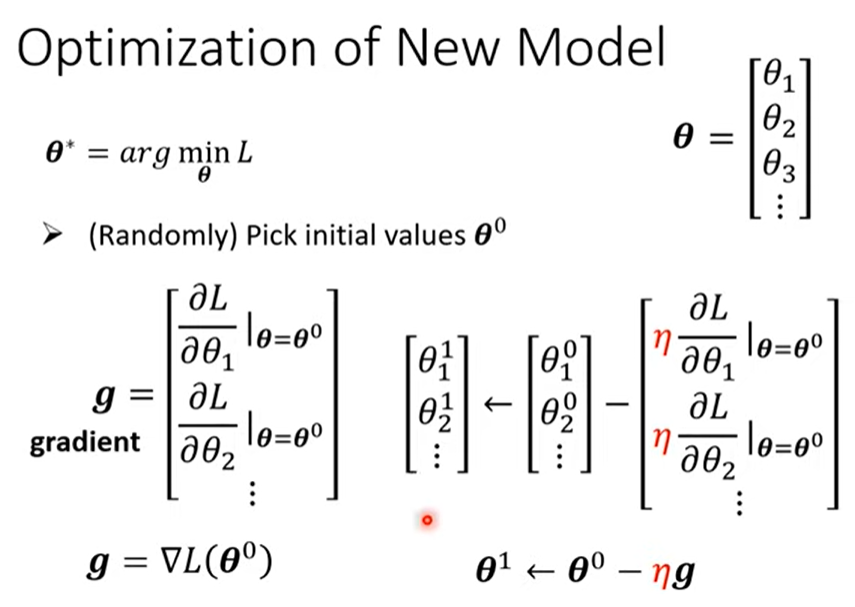
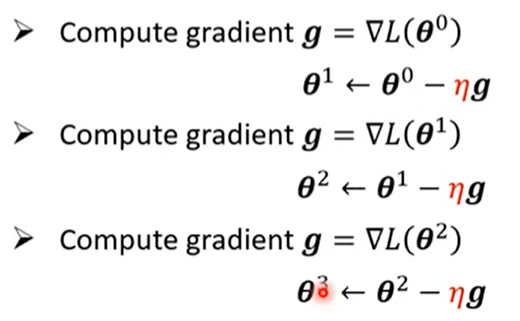
直到不想做了/得到零向量(实际上不太可能)
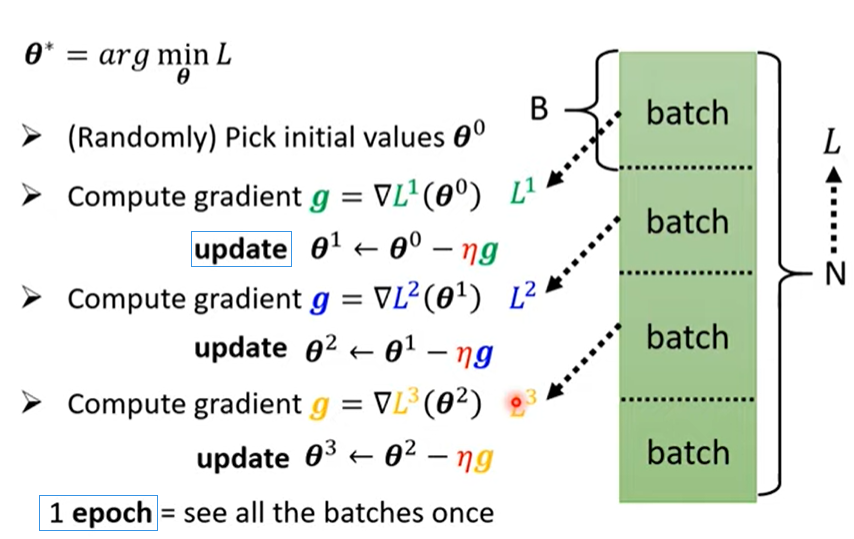
至于为什么要分成一个一个的batch(多少个也是hyperparameter),后续详谈
4.4 其他
4.4.1 Sigmoid → ReLU
两个ReLU叠加起来成为一个Hard sigmoid
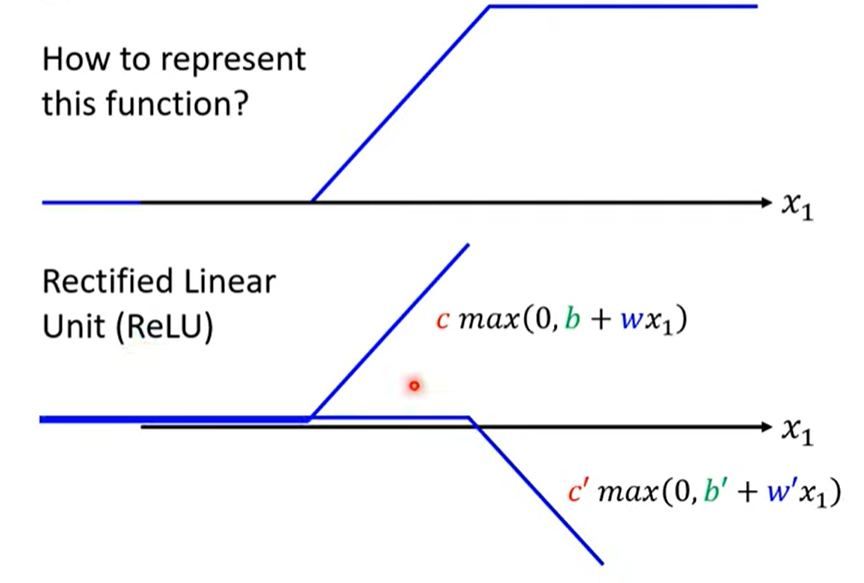

(max效果较好,原因以后详谈)
4.4.2 more variety of models
反复多做几次(几次,又是一个hyperparameter)
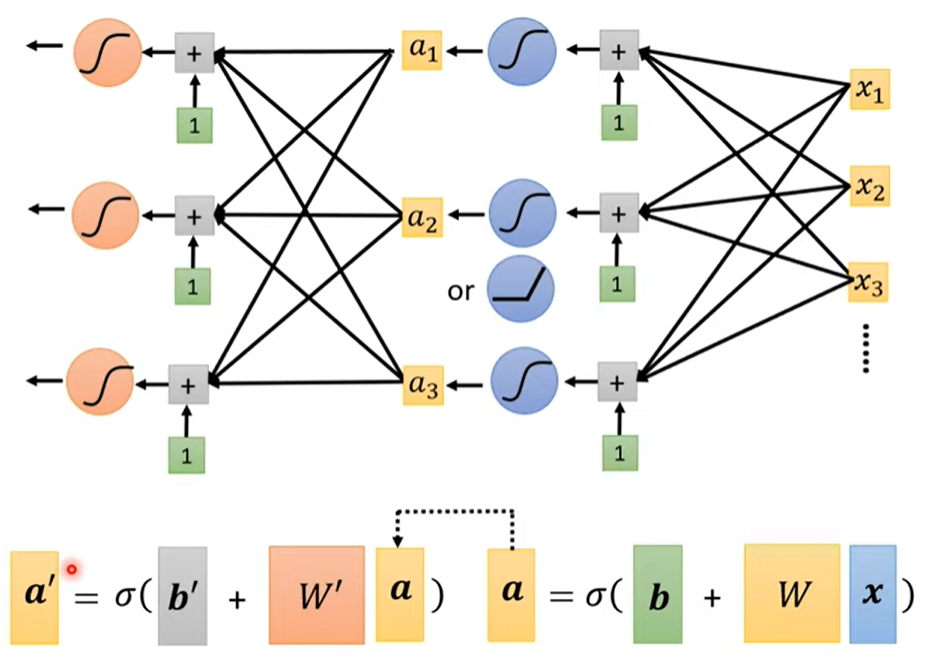
5. 神经网络 → 深度学习?!
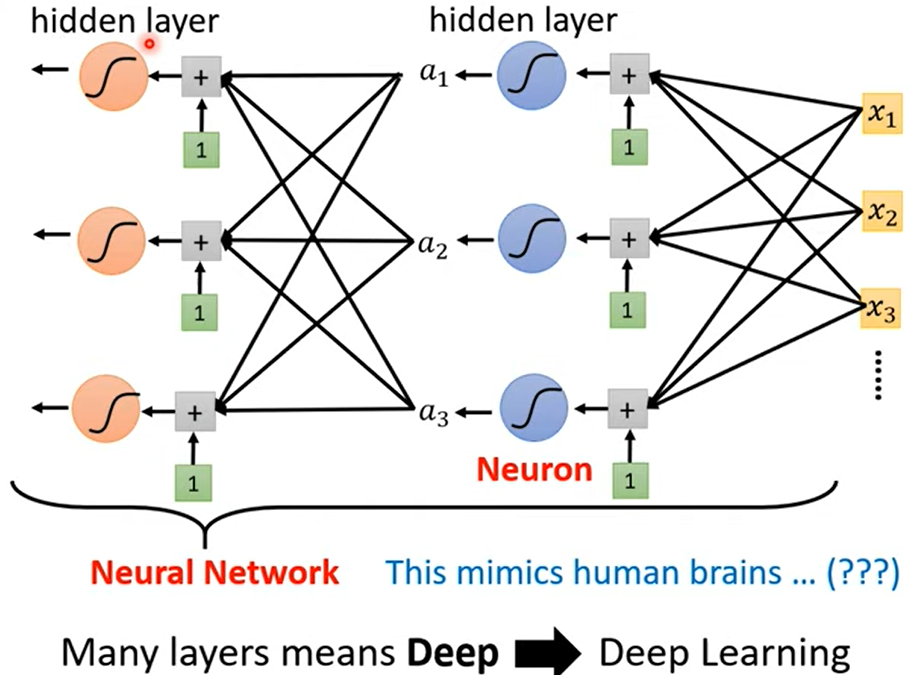

overfitting: Better on training data, worse on unseen data.

